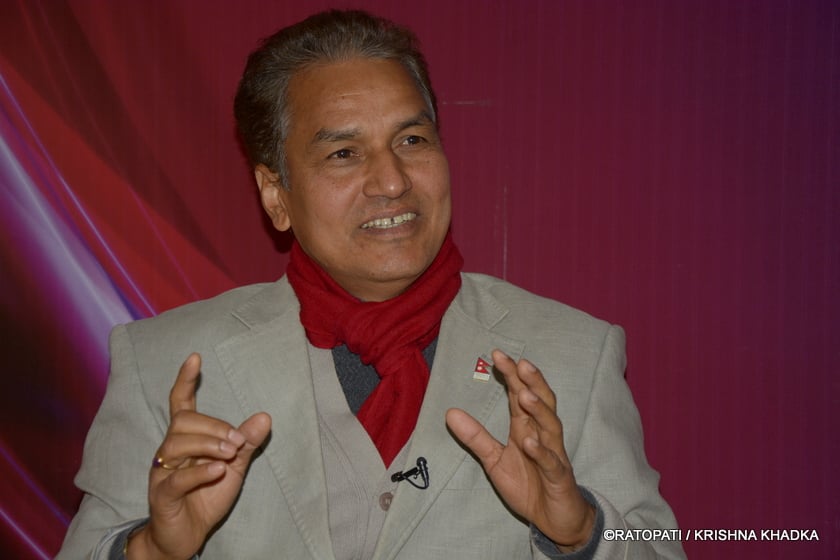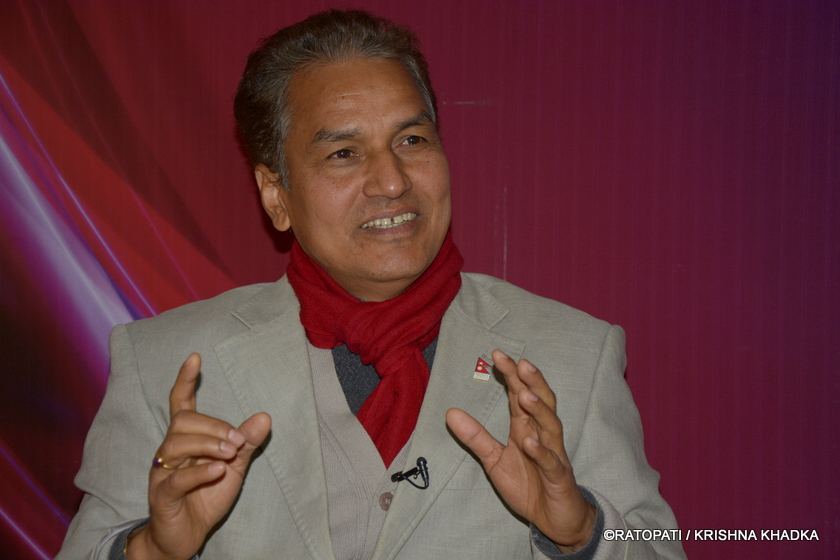Nepal as Well-Positioned Country among Two Big Economies

Nepal has transitioned into a federal state and it has also been able to institutionalize a democratic system of governance through three tiers of election. The stable government ever seen in the history of Nepal has already been started working with people’s mandate. However, it has created a challenge to the incumbent government to make maximum use of available resources and capacity to embark on a journey of development and prosperity. So far in this regard, the Government has embraced a unique socio-economic development model in accordance with its long-term objective of creating “Prosperous Nepal, Happy Nepalis" towards the journey of socialism.
For this a shift in overall development policy is needed in various respects. One of them is to establish very conducive relationships with two big neighbouring countries India and China. The old controversial and negative perspective "Nepal as sandwiched country" is needed to be changed. At the present time, it is very right time say that Nepal is well-positioned among two big economies that would make Nepal a beneficiary of this position towards its economic and social prosperity. Therefore, two neighbour focused development policy should be formed to attract foreign direct investment and to take benefit of big market so that Nepal would grab unique opportunities for the development of sandwiched economy in between big friendly neighbors.
From the beginning of modern history of Nepal, neighboring countries India and China have their respectful and significant contribution to Nepal's development in terms of Aid assistance and foreign direct investment (FDI). Nepal has been receiving external resources for over six decades and aid continues to play an important role in socio-economic development of the country.
Nepal relies heavily on foreign aid, and donors for its developmental activities. Despite the continuous efforts of over 60 years of socio-economic development, Nepal is longing for graduating from LDC status by 2022. This necessitates a huge sum of public as well as private investment. So in this regard Foreign Direct Investment (FDI) and foreign assistance/aid from the neighboring countries would be of highly important. It is generally considered as a useful means to energize an economy providing an opportunity to have new technologies, management techniques, finance and market access. However, still it is evident that Nepal seems to be low performer amongst other competing countries in the South Asia in term of percentage of gross fixed capital formation in the economy.
The bilateral relations between the Federal Democratic Republic of Nepal and the People's Republic of China have been friendly and defined by Nepal's policy of balancing the competing influence of China and Nepal's southern neighbour India. In this article a China Focused Approach in development cooperation of Nepal has been discussed. As of 2014, China has already become the world's second-largest economy in terms of nominal GDP, totalling approximately US$10.380 trillion (IMF). Since economic liberalization began in 1978, China has been among the world's fastest-growing economies, relying largely on investment- and export-led growth. The Chinese economy advanced 6.7 percent year-on-year in the second quarter of 2018, easing from a 6.8 percent growth in the previous period and matching market consensus. It was the weakest pace of expansion since the third quarter of 2016 amid intensifying tariff battle with the US. However, GDP Annual Growth Rate in China averaged 9.61 percent from 1989 until 2018, reaching an all time high of 15.40 percent in the first quarter of 1993 and a record low of 3.80 percent in the fourth quarter of 1990.
China is ranked the world's second largest FDI recipient after United States and before Hong Kong (World Investment Report 2018, UNCTAD). The country's economy is ranked the second most attractive to multinational companies for 2017-2019, after the U.S. With steady growth for several years, FDI inflows continue to increase between 2016 and 2017, from $ 133 billion to $ 136 billion. This growth is favored by liberalization plans, the rapid development of the high-tech sector and the establishment of free trade zones. The absorption of FDI is part of the policy of opening China to the outside world, aiming at creating a better business environment, structure and distribution of investment.
Since China and Nepal formally established diplomatic relations on August 1, 1955, tremendous changes have taken place in the international situation and in the two countries as well. Nonetheless, China-Nepal relations remain smooth and stable as a model of good-neighborliness and friendship. This is because China has always persisted in the equality of all nations, large and small, and respected Nepal's sovereignty, independence, territorial integrity and its development road chosen independently. Nepal has also firmly supported China's position on issues concerning China's core interests. To firmly support each other is the most valuable experience in the development of China-Nepal relations over the past 60 years.
China and Nepal have established a comprehensive cooperative partnership featuring everlasting friendship, and achieved fruitful results in economic and trade cooperation. Personnel exchanges between China and Nepal are frequent. Travelling to Nepal has become a new fashion for the Chinese people, and more and more Nepalese students come to study in China with the support of Chinese government scholarship, which will continuously cement the public opinion foundation for China-Nepal friendship. China and Nepal are linked by mountains and rivers. People on both sides of the Himalayas were afflicted with the severe 4/25 Nepal Earthquake, but the earthquake also makes the hearts of the two peoples more closely linked. After the earthquake, China offered immediate aid to Nepal. China sent to Nepal nearly one thousand rescue workers, medical workers and engineers in total, together with about 1,300 tons of emergency relief supplies. China promised 3bn yuan ($483m) in grant assistance.
As the world’s fastest rising power, China has sharply expanded its foreign aid spending in both scale and scope over the last decade. As China emerges as a major player in the field of foreign aid, longstanding “established” western donors have begun to seize the opportunity to engage China in development cooperation in an effort to form new joint-venture programs and facilitate mutual understanding. Such cooperation and linking of resources could play a significant role in improving aid quality and effectiveness throughout the developing world.
In relation to Nepal, by source of FDI, China was in the second position after India. However, in the last five years from FY 2069/70, China has made a commitment of Rs 1.58 billion in the industry sector of Nepal and placed at first position. This shows Nepal has been converting to an attractive destination for Chinese investment.
With various credentials, foreign investors especially from neighbouring countries have leverage enough for profitability. The need of the time is make sincere efforts to attract FDI from the nearest and biggest destination like China market. If we could do so, a potential sum of FDI will be at the country’s doorstep and knocking its door. The whole thing, of course, ends with aggressive marketing that Nepal is now ready for hosting FDI.
Despite the limited size of its domestic market, as giant market of the world, China would yield benefits to Nepal for its surging volume of trade. To access this market, because of the proximity, the transaction cost for goods and services is lower for Nepal than for other countries. Besides, the chance of investment from China to Nepal seems to be encouraging in the years ahead with expedite efforts. By these virtues, Nepal could attract FDI in the forthcoming times.
In terms of policy, Nepal has been a liberal economy. Accession to the World Trade Organization (WTO) in 2004, membership of the Bay of Bengal Initiative for Multi-Sectoral Technical and Economic Cooperation (BIMSTEC), becoming a part of South Asian Free Trade Area (SAFTA), new Trade Policy 2009, new Industrial Policy 2010, NTIS 2010 are some instances of the liberalized economy. Likewise, Bilateral Investment Promotion and Protection Agreement (BIPPA), Double Taxation Avoidance Agreement (DTAA) agreement and Trade and Investment Framework Agreement (TIFA) are in place. Such arrangements are potential in sending around good gesture and instilling confidence in prospective foreign investors in a view of getting them motivated for investment. Similarly, in pursuit of expediting the investment process, a separate Board is placed in the system.
Thus, at this juncture of time, Chinese market and investors could be bigger prospects for FDI in Nepal. However, there are various things to be done to sell its domestic market through aggressive marketing and to demonstrate convincing economic diplomacy for the“Prosperous Nepal, Happy Nepalis".


Leave Comment